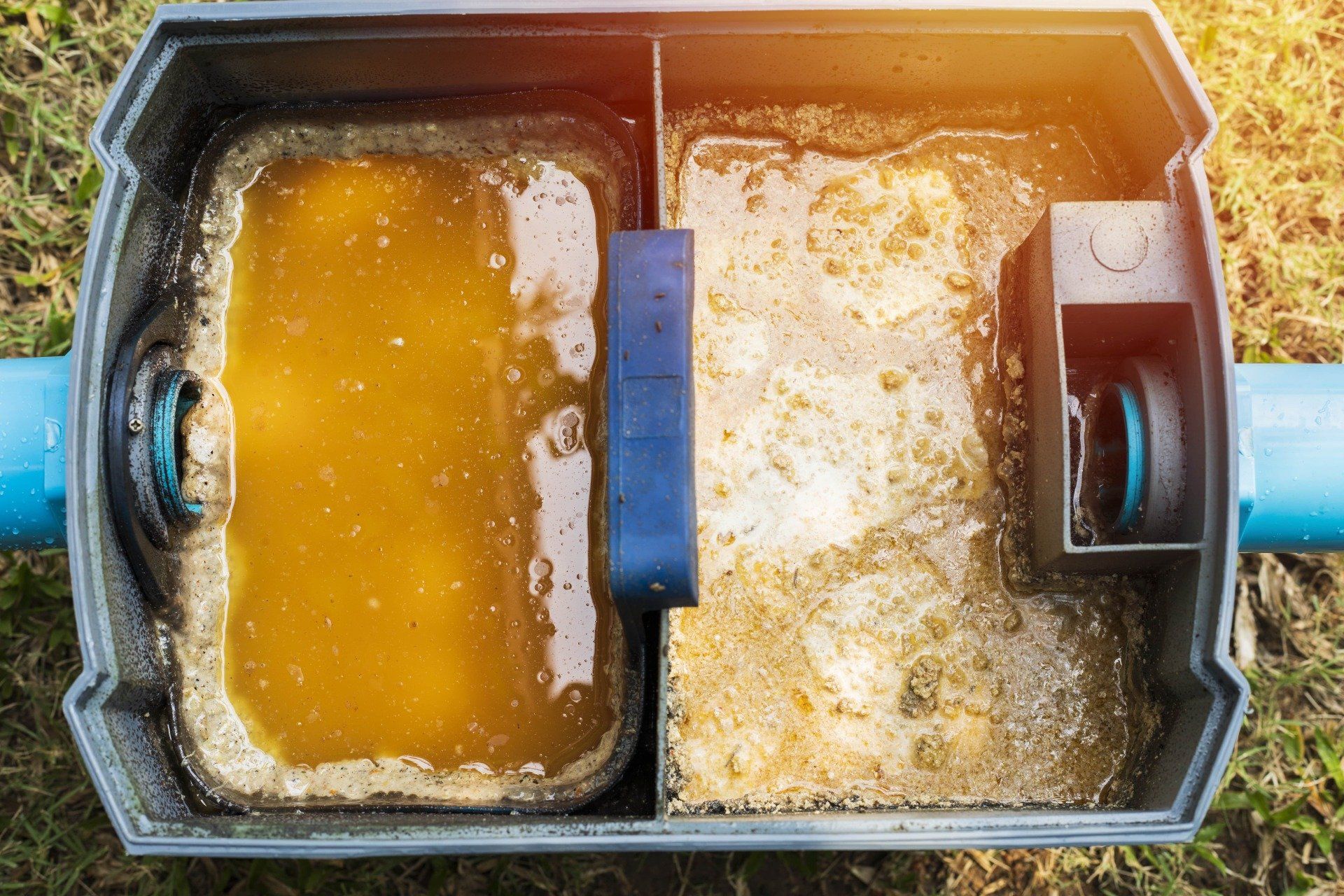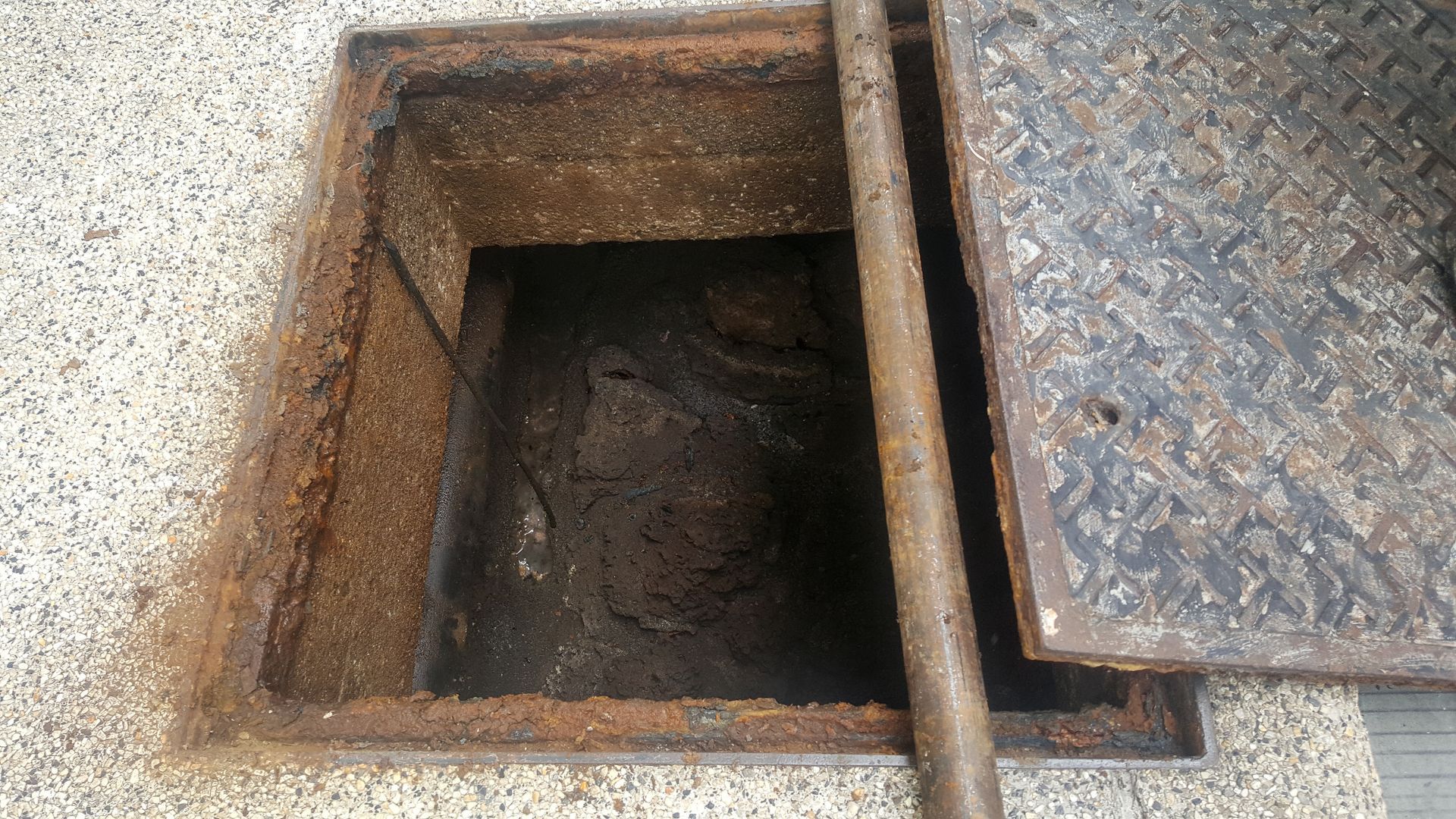Grease Traps: Grease Pumping Process

There are several steps a grease trap maintenance technician will take when cleaning your business’s grease trap:
- Skim the surface grease and debris from the interceptor (the interceptor may need to be agitated to loosen the grease cap)
- A vacuum tube is submerged in the interceptor to suck up solids from the bottom of the grease trap
- After the solids are gone the water must be vacuumed out of the interceptor
- The sides and bottom of the grease trap must be scoured cleaned
- Any remaining water from cleaning must be vacuumed out
- An inspector then needs to check the inlet and outlet sides of the receptor to ensure they are unclogged, and pipes are firmly secured
- The baffles are checked to ensure it is in place and sturdy
- The interceptor should be carefully inspected to make sure it’s crack and defect free
- The grease trap technician should make sure the lid is properly seated, secured and sealed after pumping and cleaning is complete
It’s important that the grease mat, sludge and food particles from a grease trap’s bottom and walls are properly disposed of by the grease trap maintenance company. The whole point of grease traps is to prevent these clog-inducing substances from making their way into city sewers. It’s vital that contractors don’t contribute to the problem by turning around and improperly disposing of FOG from grease traps.
Using chemical agents to emulsify grease and then washing it down wastewater drains is similarly a violation of most city and municipal ordinances in Georgia. Businesses and grease trap cleaners shouldn’t take shortcuts when disposing of grease trap waste, as it often does more harm than good.
How Grease Traps Work
Grease traps, like you might find in a small fast casual restaurant in a strip mall, often look like metal boxes underneath sinks. Everything that’s washed down the sink’s drain flows into the grease trap first. Non-water waste, including food particles, fats, oils and grease, get trapped in the grease trap. When a grease trap is clean and working properly, water shouldn’t have any trouble flowing through the inlet and out the outlet into the sewer system.
Solid food waste particles and heavier materials will settle on the bottom of the grease trap, while fats, oil and grease that are lighter than the water will float on the surface. Once those substances have settled and separated, the wastewater is free to flow out of the trap.
The various filtering mechanisms of a grease trap ensure only water is allowed to pass into the sewer lines or septic system.
Grease trap size and placement depend on the type and size of the food service provider. At a large restaurant or big cafeteria (such as at a school or office building), the grease traps are often underneath parking lots and have manhole covers for pumping and cleaning access.
How Do You Know If Your Grease Trap Contractor Is Doing Things Right?
Trust reputable grease trap maintenance companies that have a positive reputation with local inspectors. These companies will be sticklers for protocol and will be happy to answer any questions you may have about grease trap pumping, oil recycling and their FOG disposal methods.
Also check on your post-cleaning manifest to make sure your FOG disposal and recycling service provider is taking your business’s waste to an approved FOG disposal site, like the one owned and operated by Southern Green Inc. You may also want to ensure your provider’s trucks and drivers are Registered and Inspected Commercial Transporters for FOG.
Contact a Reliable Grease Trap Cleaning and Maintenance Company
Businesses in Atlanta and the surrounding areas can trust the team at Southern Green Inc. for reliable grease trap pumping and maintenance services. We take pride in meeting or exceeding all safety and environmental FOG and wastewater disposal requirements.
At Southern Green we place an emphasis on environmentally responsible services. We’ve even opened our own onsite water treatment plant to ensure our customers’ waste is responsibly handled from start to finish.
If you want a partner that will take your business’s grease trap and plumbing health seriously, we can help.
Call us at (404) 419-6887 or fill out the form on our website to get a
grease trap cleaning quote or to request one-off or scheduled grease trap cleaning services.
Recent Blog Posts
Contact us Today for a FREE Quote
We are committed to making grease trap cleaning and fryer oil recycling as clean and easy as possible. If you’d like to learn more about our services or get a quote, give us a call at (404) 419-6887.



